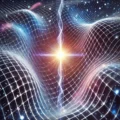Photon Genesis from Vacuum Through Dipole Emergence in Quantum Noise
Abstract
This paper presents a novel constructive approach to photon genesis from vacuum fluctuations via quantized dipole formation. The model combines principles of quantum field fluctuation, field impedance, and stochastic excitation thresholds to define the emergence of photon dipole pairs. This theoretical framework proposes a discrete function governing photon genesis events and outlines how interactions between such photons may be described by classical electrodynamics via the Lorentz force law. The result is a layered model linking quantum vacuum dynamics with emergent structure, forming a precursor to charge-binding and eventual mass emergence.
Introduction
The creation of a photon is typically treated as an abstract quantized emission event. Here, we model it as the constructive emergence of a dipole pair from the quantum vacuum, rooted in thermodynamic noise and Planck-scale energy thresholds. This approach posits a fundamental shift toward bottom-up field construction, based on discrete units of action and field lattice dynamics.
Vacuum Initialization
The vacuum is initialized as a medium with defined electromagnetic impedance, resulting from its permittivity ε0ε0 and permeability μ0μ0. This impedance governs energy propagation and reflection conditions in the field lattice:
![Rendered by QuickLaTeX.com \[ Z_0 = \sqrt{\frac{\mu_0}{\varepsilon_0}} \approx 376.73~\Omega \]](https://gravityz0.com/wp-content/ql-cache/quicklatex.com-b607bfb2ea5e3d23db3d2ffb7fea0b51_l3.png)
Quantum Noise Injection
Quantum vacuum energy is modeled as a stochastic field N(t)N(t) driven by tri-variate Gaussian noise. This noise simulates Brownian motion and thermal emission within the field, forming the backdrop of dynamic charge fluctuations:
![]()
Threshold Excitation — The First Jerk
To transition from potential to action, a second-derivative excitation threshold must be crossed. This “first jerk” is the analog to Planck’s minimum action:
![Rendered by QuickLaTeX.com \[ \left| \frac{d^2N}{dt^2} \right| > E_{\text{Planck}} \Rightarrow \text{Activation} \]](https://gravityz0.com/wp-content/ql-cache/quicklatex.com-2a82162452ee29e7464c56023eeb33ab_l3.png)
Dipole Pair Detection
Once the threshold is exceeded, a dipole pair forms if both the slope and amplitude criteria are met:
![Rendered by QuickLaTeX.com \[ \left| \frac{dN}{dt} \right| \geq S_{\text{thresh}}, \quad |N(t)| \geq A_{\text{thresh}} \]](https://gravityz0.com/wp-content/ql-cache/quicklatex.com-a06b2e1e780dc8a94b6e7a36fc094a75_l3.png)
These pairs represent oppositely-valued, quantum-asymmetric charges rotating about a shared field node.
Photon Genesis Function
We define a photon formation function Φ(t) that returns unity upon successful creation of a dipole:
![Rendered by QuickLaTeX.com \[ \Phi(t) = \begin{cases} 1, & \text{if } \left| \frac{d^2N}{dt^2} \right| > E_\text{Planck},\ \left| \frac{dN}{dt} \right| \geq S_{\text{thresh}},\ |N(t)| \geq A_{\text{thresh}} \\ 0, & \text{otherwise} \end{cases} \]](https://gravityz0.com/wp-content/ql-cache/quicklatex.com-01ff81c1627c329f8cec7576539ba534_l3.png)
Lorentz Force Law
This begins the compression phase of energy organization
![]()
